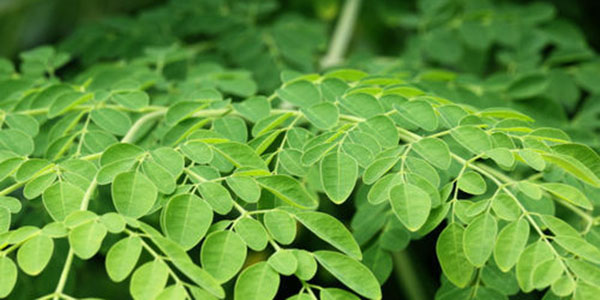
PLANTING:
Moringa oleifera Lamarck, originally from India, is widely distributed in many tropical regions; in the Pacific region (Aregheore 2002), in West Africa (Freiberger et al 1998; Lockett et al 2000), as well as Central America and the Caribbean (Ramachandran et al 1980; Foidl et al 1999).
It is a multi-purpose plant cultivated for medicinal applications and used as food and feed. Seeds of Moringa were extracted for oil and curry powder (Golh 1998) and have been used for cleaning water. In some places in Vietnam, Moringa leaves are used for food (Pham Hoang Ho 1970). Agronomic trials with Moringa (Manh et al 2003) show that the plant can grow well in hilly areas, in weathered soils of low fertility in Tinh Bien district, An Giang province. However, information about growth of Moringa in the acid soil regions of the Mekong Delta is almost ab-sent.
Moringa foliage is known as a rich protein source, low anti-nutritional factors (Makka and Becker 1996). Moringa foliages is therefore a potential inexpensive protein source (Sarwatt 2004).
The aim of the present study was firstly to measure some agronomic characteristics of Morin-ga for biomass production and secondly to evaluate its use as a basal diet for goat production. A comparison between methods of feeding Moringa and Leucaena (by hanging the branches or putting them in the feed trough) was included in the study in view of the findings by Theng Kouch et al (2003) that hanging the branches of forage shrubs supported higher feed intakes and digestibility as compared with putting it in the feed trough.
PLANTING:
The seeds of annual moringa may be directly dibbled in the pit to ensure accelerated and faster growth of the seedlings. The best suited season for sowing the seeds is September under Southern Indian conditions. The time of sowing has to be strictly adhered to because the flowering phase should not coincide with monsoon seasons, which results in heavy Flower shedding. (Ssp group)
Usage
Growing moringa plants may not require watering except during hot weather when they may be irrigated once a week. Annual moringa responds well to irrigation and the yield can be doubled (vegetable moringa fruit) by drip irrigation as compared to rain-fed crops, Drip irriga-tion at the rate of 4 lit/day can enhance yields by 57 per cent as compared to rain-fed crop.
FERTILIZER
Moringa trees are generally grown successfully without fertilizers. Southern India, ring trenches are dug about 10 cm from trees during the rainy season and filled with green leaves, manure and ash, and then covered with soil. This is said to promote higher fruit yields If fertiliz-ers are applied, the crop requires 44 : 16 : 30 g NPK/ tree at the time of pinching (75 days after sowing). Nitrogen @ 44g / tree must be applied as top dressing at first flowering (150-160 days after sowing).
PEST AND DISEASES
Developing fruit are damaged by the fruit fly Gitona distigmata which can be effectively ma-naged by adopting integrated pest management (IPM) measures. No major disease in India has been reported as affecting the economics of the crop.
Annual moringa, when the harvest is in, the trees are cut down to a height of one meter above ground level for ratooning. These ratoon plants develop new shoots and start bearing four or five months after ratooning.
During each ratooning operation, the plants are supplied with the recommended level of n, p and k nutrients.
EXPENDITURE
1. Cultivation Cost From Seeds:
| Distance (in acre) | Seeds(in kg) | Cost of seeds (per Kg) | Total | Other expenses (as per require-ment) | Cost of cultivation |
|---|---|---|---|---|---|
| 1*1 ft | 8 kg | 7000 /- | 8*7000 = 56,000/- | Fertilizers Land preparation Labor expenses etc. | 56,000 |
Company Buy Back
| Income of year | Total dry leaves(in year) | Company buy-back (of dry leaves) | Total |
|---|---|---|---|
| Year 1st | 3000 kg (3 ton) | 80 Rs. Kg | 3000X80 = 2,40,000 /- |
| Year 2nd | 3000 kg (3 ton) | 80 Rs. Kg | 3000X80 = 2,40,000 /- |
| Year 3rd | 3000 kg (3 ton) | 80 Rs. Kg | 3000X80 = 2,40,000 /- |
| Year 4th | 3000 kg (3 ton) | 80 Rs. Kg | 3000X80 = 2,40,000 /- |
| Year 5th | 3000 kg (3 ton) | 80 Rs. Kg | 3000X80 = 2,40,000 /- |
| Total Income = 12,00,000/- |
Technical Support & Services:
We also provide technical support for farming. Our Service Department with technically quali-fied staff provide after sales service and farmers' advisory services to our customers to get bet-ter plant establishment and faster growth of Herbal and Horticultural plantations.
We have largest network of employees who deliver Plants to customers at their door steps. Free technical services to customers on planting method, management practices and plant pro-tection measures. Our teams of Agricultural Experts periodically visits and supervise the planta-tions and suggest necessary guidelines to get better growth and higher returns. The income & expenditure indicated by the company is an approximate figure, as it also depends on the na-ture and hard work of the farmer.
SERVICES
- This includes Supervision, consultancy, guidance, Transportation cost first year.
- First production start after 1st year and production will remain next 5 year.
- Buy back agreement of Moringa leaf.
- The income expenditure indicated by the company is an approximated figure, as it also depends on the nature and hard work of the farmer.
TERMS AND CONDITIONS OF COMPANY
- For 1 Acre plantation the cost of Plants is Rs. 56,000/-, out of which 50% i.e. Rs. 28, 000/- has to be paid before the cultivation and the remaining half after the planting is done.
- The Buy Back Agreement Stamp paper of Rs.100/- has to be stamped by District Court of your area.
- For 10 Acre or more yield the buy Back Agreement Stamp Paper will be of Rs.500/-.
